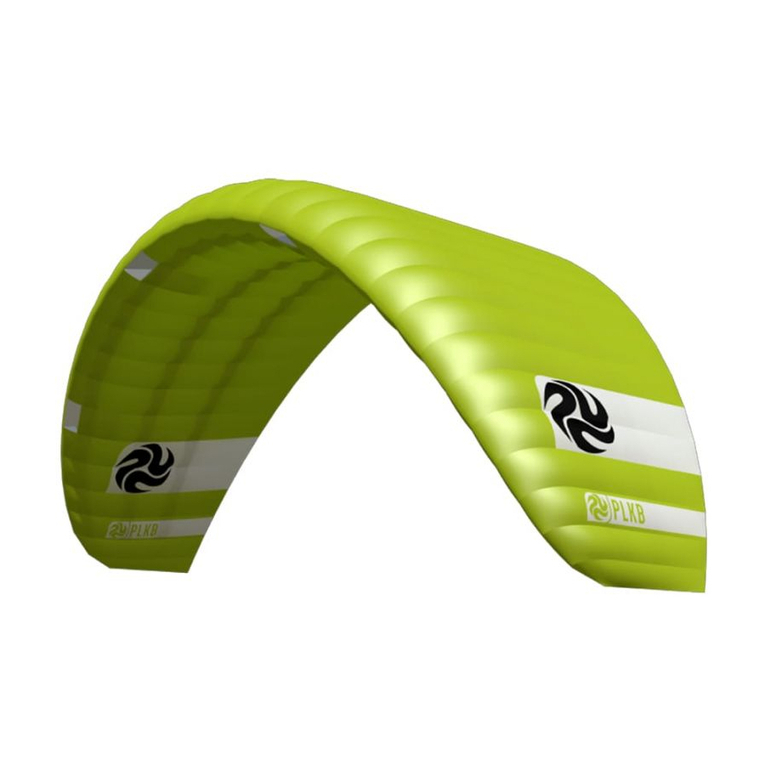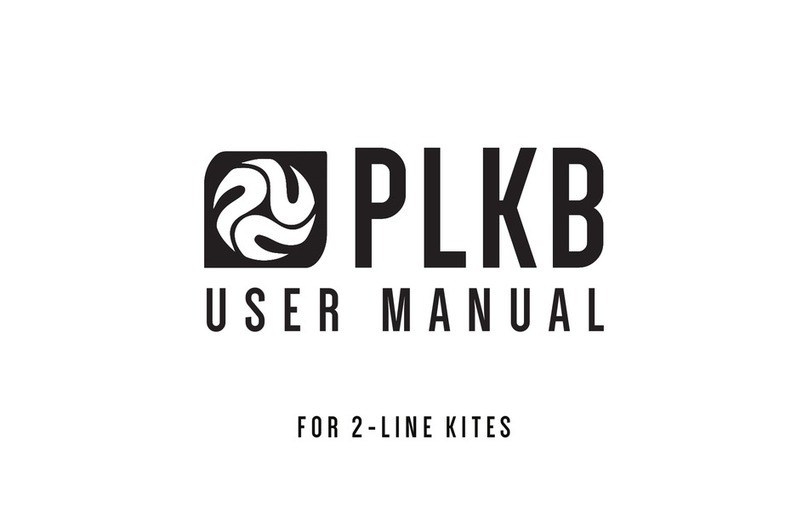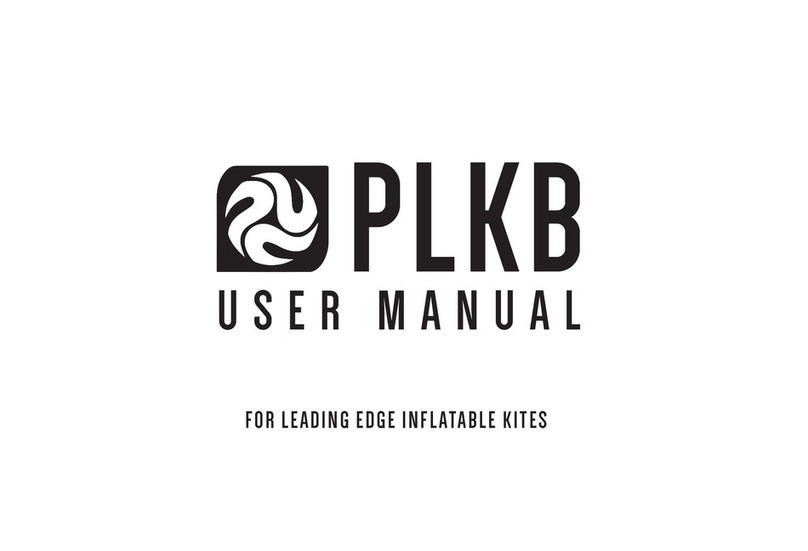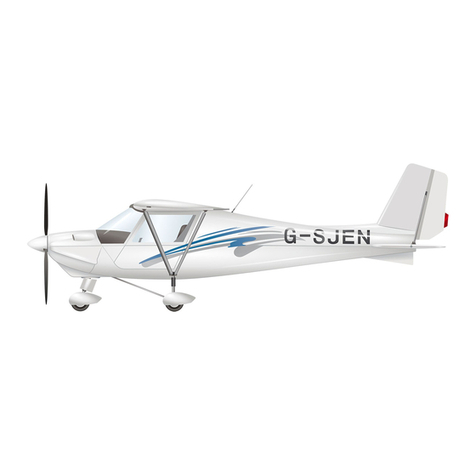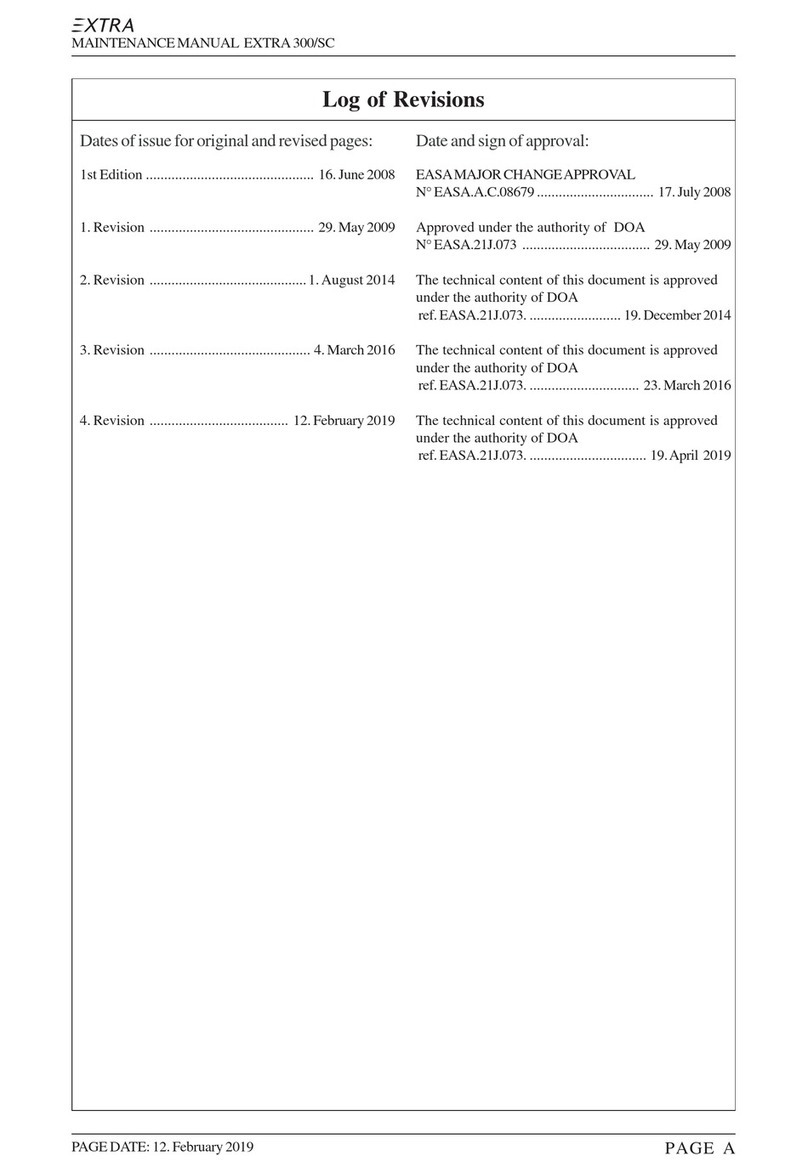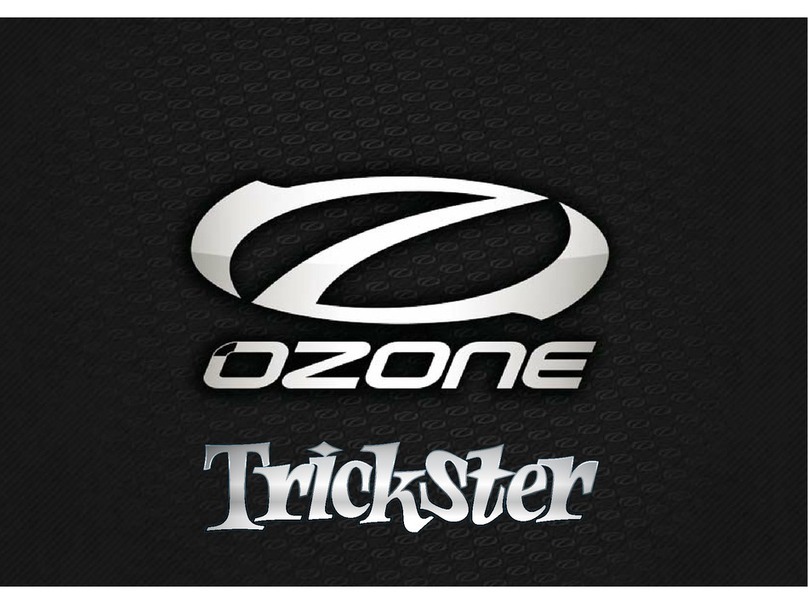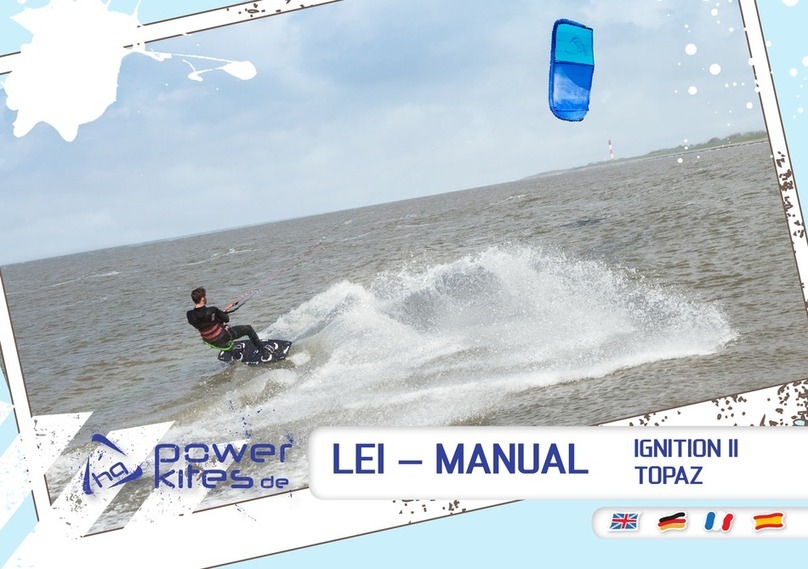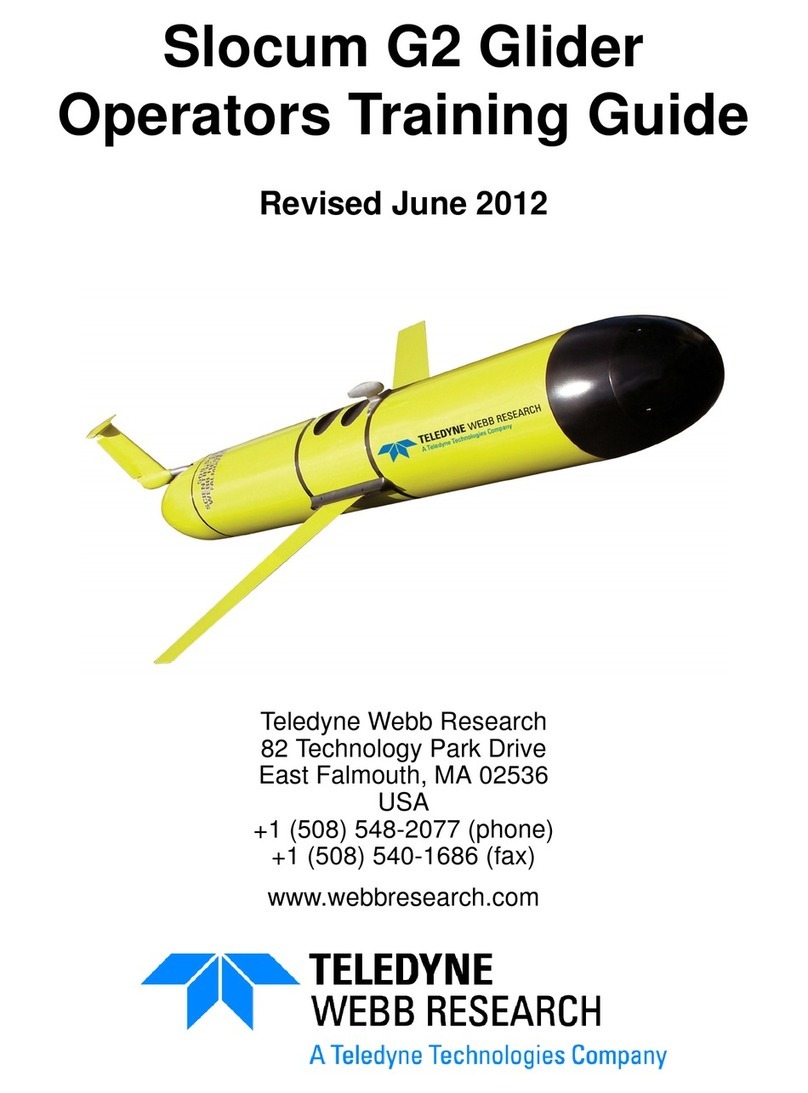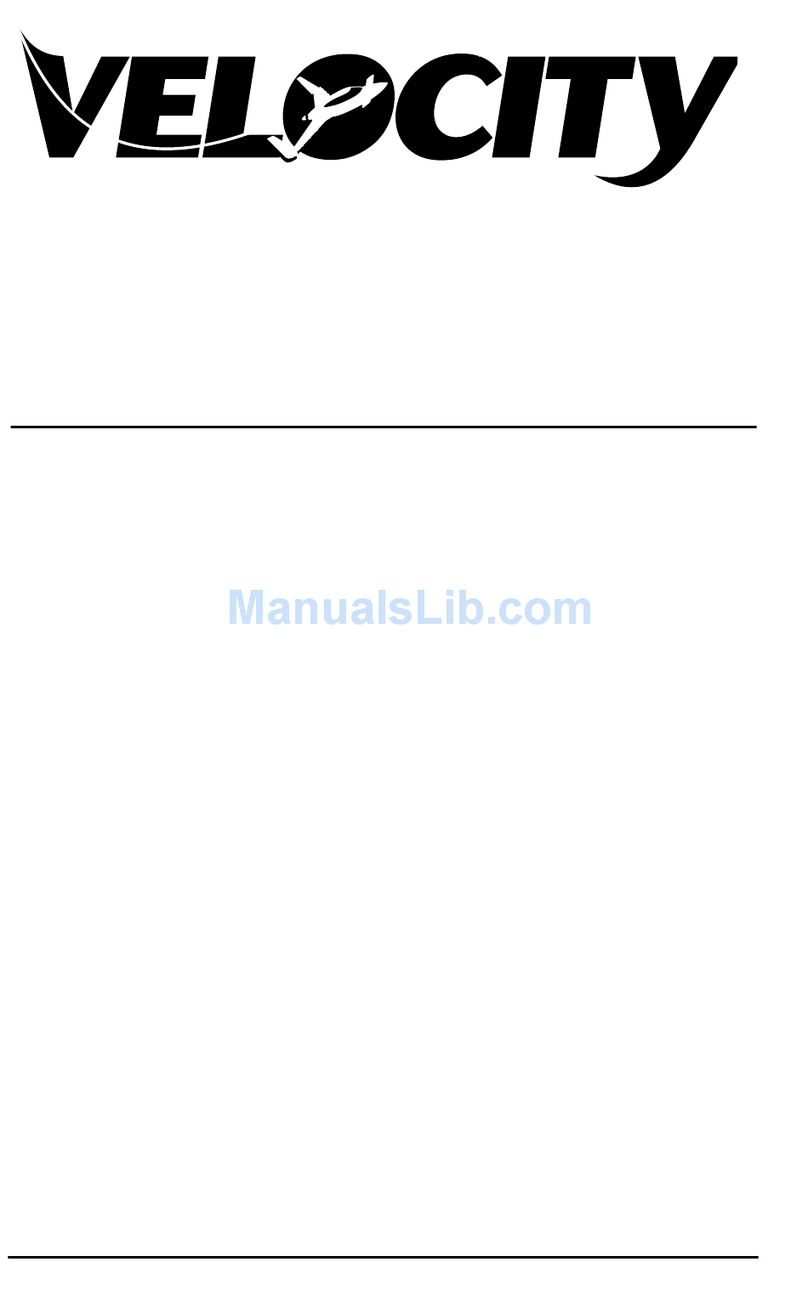PLKB SWELL V5 User manual

FOR LEADING EDGE INFLATABLE KITES

WELCOME
Thank you for buying this PLKB product, and welcome to the World of PLKB, a wind driven excite-
ment, where people passionately pursue their dreams. Whether that’s freeriding at waters, foiling
with only a summer breeze, freestyle in the storm or charging rolling sets on your wave board. PLKB
is here to help you pursue your dream, making you achieve your ultimate challenge and Never stop
having fun! Are you ready?
PLKB has been there taking challenges from the early days of the sport. Challenges to develop
breakthrough ideas, make better products, improve performance and quality in all aspects of those
products. We have the right kites dor all kite disciplines, for any terrain and for all conditions. All this
is realized by a passionate crew of kite sports enthusiasts and we invite you to join us. It’s that pas-
sion that makes us y.
Before any attempt to use this product, please ensure you pay full and careful attention to the
contents of this manual. While traction kiting is an exciting and fun sport, it can be highly dangerous,
especially if not all the necessary safety precautions are taken. So please make sure you learn this
great sport in a safe way. Only then will you progress quickly and enjoy this beautiful and enjoy this
beautiful sport to the max.
Enjoy!

PLKB MANUAL
CONTENT
INHOUD
SAFETY INSTRUCTIONS 4
SAFE LOCATION AND WEATHER CONDITIONS
SAFE KITEBOARDING
SAFE TRACTION KITING
SAFETY ISSUES WHEN USING THIS PRODUCT:
THE WIND WINDOW 6
WIND CHART
TERMINOLOGY 7
STARTING OFF 8
STEP 1. PUMPING UP YOUR KITE
STEP 2. SETTING UP YOUR BAR AND LINES
STEP 3. CHECKING YOUR SAFETY SYSTEM
KITE CARE 12
WARRANTY 13
DISCLAIMER - RELEASE OF LIABILITY 14

PLKB MANUAL
• Stay away from power lines, roads, airelds, railway lines, trees and
buildings.
• Never launch your kite in crowded areas. Do not y your kite over by-
standers.
• Make sure there is a ‘clear’ downwind area at least three times the dis-
tance of your ying line length.
• Never y kites or use this product in thunderstorms, lightning or gusty/
stormy winds.
• Never y a kite or use this product with wind forces so strong that you
are unable to maintain full control of your kite and its power at all times.
• Do not y a kite or use this product when wind conditions are likely to
change dramatically.
• Stop kiting immediately when a (thunder)storm is approaching.
• Make sure you are familiar with the location and local customs and laws
before attempting any kind of kite sports.
• Do not go kiteboarding in oshore winds.
• Be careful when kiting in onshore winds.
• We strongly recommend the use of helmet and life jacket/impact vest.
A safety
knife to cut ying lines in case of emergency is recommended.
• Do not kiteboard in spots already in use by swimmers or surfers.
• Beware of strong currents and sharks.
• Stay safely away from other watercrafts and shipping lanes.
• Never go further out to sea than you can safely swim back.
• Always make sure there is a capable person on shore that is keeping
watch and is
ready to provide (or call for) help in case of an emergency.
• We strongly recommend taking lessons from a certied kiteboarding
school
before using this kite on your own.
CAUTION: Kite powered sports can be very dangerous and physically demanding. The user of this product should understand that
participating in kite powered sports may involve serious injury or death and agrees to observe the safety precautions listed below.
SAFETY INSTRUCTIONS
SAFE LOCATION AND WEATHER CONDITIONS SAFE KITEBOARDING

PLKB MANUAL
• A traction kite is not a toy and should not be own by inexperienced
persons and certainly not by children.
• Learn to y kites by starting in light winds with a small sized kite.
• Never use any type of kite or this product for paragliding, parachuting
or base jumping.
• Never use any type of kite or this product for jumping o high places
like hills or clis
• Never use any type of kite or this product for any manlifting activity.
• Always wear fully protective gear.
• Prior to every use of this product, fully check your equipment for any
signs of wear and tear. Replace parts immediately where needed.
• Prior to every use of this product, check if your safety releases are still
working properly and you are aware how to use it. In case the safety
release does not work as it should, do not use this product and replace
parts where needed.
• Only use this product for power kiting, buggy riding, landboarding and
snowkiting.
• Only use this product when you are in a good state of health. Never use
this product when under the inuence of alcohol, drugs or medication.
• Do not alter, modify or change this product. Repairs should be done by
a professional kite repair shop, sail repair shop, or by the PLKB company.
SAFE TRACTION KITING SAFETY ISSUES WHEN USING THIS PRODUCT:

PLKB MANUAL
THE WIND WINDOW
Before ying your kite it is very important to understand the ‘wind
window’. The image shows where the kite will create the most
power (straight downwind, also known as the ‘power zone’) and
where the kite will create the least power (edge of the window
and zenith).
WIND CHART
MAXIMUM POWERMINIMUM POWER
EDGE OF WIND WINDOW POWER ZONE
3h
2h
1h
11h
10h
9h
6h
12h
BFT KNOTS KM/H M/S MPH DISCRIPTION
0 0 0-1 0-0,2 0 Calm
11-3 1-5 0,3-1,5 1-3 Light Air
24-6 6-11 1,6-3,3 4-7 Light Breeze
37-10 12-19 3,4-5,4 8-12 Gentle Breeze
4 11-16 20-28 5,5-7,9 13-18 Moderate
Breeze
517-21 29-38 8,0-10,7 19-24 Fresh Breeze
6 22-27 39-49 10,8-13,8 25-31 Strong Breeze
7 28-33 50-61 13,9-17,1 32-38 Near Gate
8 34-40 62-74 17,2-20,7 39-46 Gale
941-47 75-88 20,8-24,4 47-55 Strong Gate
10 48-55 89-102 24,5-28,4 56-64 Storm
11 56-63 103-
117
28,5-32,6 65-73 Violent Storm

PLKB MANUAL
TERMINOLOGY
1. INFLATE/DEFLATE VALVE
2. PUMP LEASH ATTACHMENT
3. LEADING EDGE
4. SINGLE INFLATION AIR DUCTS
5. CANOPY
6. TRAILING EDGE
7. LEFT TOP LINE ATTACHEMENT POINT
8. STRUTS
9. RIGHT TOP LINE ATTACHEMENT POINT
10. BAR PRESSURE ADJUSTMENT
11. LEFT REAR LINE ATTACHMENT POINT
12. RIGHT REAR LINE ATTACHMENT POINT
1
2
3
4
5
6
7
8
9
10
11
12

PLKB MANUAL
STARTING OFF
To start ying your kite you need to follow the following step:
Step 1. Pumping up your kite
Step 2. Setting op your bar
Step 3. Checking your safety systems
STEP 1. PUMPING UP YOUR KITE
Place your kite on the ground
with its leading edge into the
wind, the bottom of the kite fac-
ing upwards. Attach the pump
leash to the kite’s pump leash
attachment. Attach the pump
hose to the valve.
Make sure the clips on the air
ducts leading to the struts are
all open. Start pumping until
the leading edge feels rm.
Pump until your pressure gauge
reaches about 8 PSI.
Detach the pump and close the
inate valve. Close the clips on
the air ducts. This will prevent the
whole kite from losing pressure
in cade of a puncture.
Place the kite on the ground
with the top of the kite facing
up, leading edge into the wind.
Weigh down the canopy with
some sand or a board with ns
facing up.

PLKB MANUAL
STEP 2. SETTING UP YOUR BAR AND LINES
BRIDLE
FLYING LINE FLYING LINE FLYING LINE
BRIDLE BRIDLE
B
RIDLE
FLYING LINE FLYING LINE FLYING LINE
BRIDLE BRIDLE
Make sure you attach your ying lines using a larkshead knot. Place
a larkshead knot in the ying line connector, slide it over the middle
knot on the top line attachment on the bridle and tighten the larks-
Attaching the top lines to the kite Bar pressure
The rear line can be attached to 3 dierent positions to set the bar
To make the rear lines shorter move
the attachment loop of the black
bridle line to a knot closer to the kite
To make the rear lines longer move
the attachment loop of the black
bridle line to a knot further from the
kite
Connect the ying line connector to the rear line attachment and
tighten the larkshead as shown
Attaching the rear lines to the kite Adjusting the rear bridle line
1. Minimum bar pressure
2. Medium bar pressure
3. Maximum bar pressure
1 2 3

PLKB MANUAL
PUSH
automatically
RELEASE
SECONDARY
SAFETY
automatically
STEP 3. CHECKING YOUR SAFETY SYSTEM
Before launching your kite always check if your primary and secondary safety releases function properly. The Compass
control bar has a primary release on the depower loop. After activitating the release, the kite only supported by the
safety line.
To activate your primary quick release, push the red release system towards the kite.
Automatically Automatically

PLKB MANUAL
‘CLICK’
SECONDARY QUICK RELEASE
In case you completely want to disconnect yourself from the kite, you can activate the secondary quick release after-
wards.
To activate your secondary quick
release, move the red release in
the direction of the arrows.
Re-connect the primary safety release
by pushing the loop inside the release
system in between the metal parts. You
should here a ‘click’. Check if the loop is
xed inside the release system by pulling
on it.
Re-connect the secondary safety release by folding the
stainless steel pin down and placing the loop over the pin.
Push the release cu up and fold the pin in the release
cu. Let go of the release cu with the pin inside of the
cu.
Activating the secondary quick
release
Re-connecting the secondary
quick release
Re-connecting the primary quick
release
CONNECT
PUSH
UP
FOLD
IN
PUSH TO
RELEASE

PLKB MANUAL
PLKB products are designed to be strong and durable. The extreme
nature of the kite sport puts a high strain on the equipment involved.
By taking good care of your equipment, you can minimize the wear on
your equipment.
Kite Care:
• Inspect your equipment before launch. Check for tears, abrasions,
undone stitching, and all other forms of damage.
• Test all moving parts of your equipment such as pulleys before
every launch.
• Do not rig on rough terrain. Stay far away from sharp items that
could damage your kite, such as seashells, trees, washed up wood
or fences.
• Secure your kite using soft items like sand or sand bags. Do not use
items with sharp edges like rocks.
• Do not unnecessarily leave a kite unused for a longer period of time
to prevent UV damage. Weigh down uttering parts to reduce wear.
• Before connecting your pump to the inate valve, pump it a few
times to remove any sand from the hose.
• Always make sure your kite is dry before packing and free of sand
or sharp items.
• Regularly rinse your kite when used in salt water.
• When storing for a long time, it is advised to leave part of the bag
open, to allow fresh air to get in the bag, and any remaining traces
of moist to dry up
Bar Care:
• Make sure you regularly check your bar for wear and tear. Replace
parts when needed
• Make sure your ying lines are free of knots.
• Before launching, always check that your quick releases are in
working order and free of sand or other debris.
• When reaching the water, before starting your kiteboarding session,
splash some water on your bar to rinse o sand that has stuck to it.
• After every session, rinse your bar with tap water to remove the salt
from the bar.
If there are problems with your kite or your bar, please contact your PLKB
Dealer
KITE CARE

PLKB MANUAL
PLKB warrants this product, when it is purchased from an authorized
PLKB dealer by a retail customer, to be free of major defects in material
or workmanship to the original purchaser, for a period of six (6) months
from the date of purchase by the original retail customer. This warranty
is subject to the following limitations:
• The warranty is solely for the benet of the original retail purchaser
and may not be assigned. For retail customer warranty claims, proof of
purchase from an authorized PLKB dealer is required. If the date of pur-
chase can not be established, PLKB will make a determination based
on the last production year and/or the condition of the particular prod-
uct claimed.
• The warranty on this product is valid only when it is solely used for
designated purposes and does not apply to any product used for rental
and/or teaching purposes.
• PLKB will make the nal warranty determination, which may require
inspection and/or photos of the equipment. Photos must clearly show
the defect(s). If necessary, this information must be sent to the PLKB
dealer where the product was originally purchased, postage prepaid.
Alternatively you may contact the PLKB distributor in (or nearest to)
your country.
• If a product is deemed to be defective by PLKB, the warranty covers
the repair or replacement of the defective product only. PLKB will not
be responsible for any costs, losses, or damages incurred as a result
of loss of use of this product. This warranty does not cover damage
caused by misuse, abuse, neglect or normal wear and tear includ-
ing, but not limited to, damage due to excessive sun exposure, use
in combination with other than PLKB control gear, damage caused by
improper handling and storage, and damage caused by anything other
than defects in material and workmanship.
WARRANTY
• The warranty is voided if any unauthorized repair, change or modica-
tion has been made to any part of the equipment. The warranty for any
repaired or replaced equipment takes eect from the date of the original
purchase only. The original purchase receipt must accompany all warranty
claims. The name of the PLKB dealer and the date of purchase must be
clear and legible.
• There are no warranties which extend beyond the warranty specied
herein.
Warranty Claims
Warranty claims must be processed through an authorized PLKB dealer
and be issued a return authorization prior to shipping the product con-
cerned. For claims processing please contact the PLKB dealer the prod-
uct was purchased from or call - or write to - the national PLKB distributor.
If there is no PLKB distributor in your country, please nd our contact de-
tails on our website www.PLKB.world.

PLKB MANUAL
PLKB / Equipe - Trading bv. - Release of Liability
Caution
Before making any attempt to set up or use this product, you agree to
have read and fully understood the entire PLKB user manual; includ-
ing, but not limited to, all instructions and warnings it contains. You also
agree to make sure that any other user of this PLKB product, prior to
using it, will also read and fully understand this PLKB user manual; in-
cluding, but not limited to, all instructions and
warnings it contains.
Assumption and acceptance of risk
Kite powered sports can be very dangerous and physically demand-
ing. While powerkiting in its many forms is an exciting and fun sport,
it can be highly dangerous for yourself and others around you, espe-
cially if the necessary safety precautions are not or only partly taken.
The user of this PLKB product should understand that participating in
kite powered sports can result in serious personal injury – and even
death – to the user as well as to third parties. Before setting up and
using this PLKB product you agree to assume and accept any risk of
injury, whether known or unknown, to both yourself and any third par-
ties from using this PLKB product. To reduce these risks, we strongly
recommend you to stick to the safety precautions listed in this PLKB
user manual.
Disclaimer and Release of Liability
Concerning the purchase of this PLKB product by you, you hereby
agree, to the greatest extent allowed by law, to waive any claims you
have or may have in the future against PLKB and all related entities
resulting from using this PLKB product and/or any of its components.
You will also release PLKB and all related entities from any liability
for special, indirect, incidental, consequential or exemplary damages,
whether in contract, tort, negligence, strict liability or otherwise includ-
DISCLAIMER - RELEASE OF LIABILITY
ing, but not limited to, loss of property other than this PLKB product, loss
of use of this product, or other property or other economic losses. PLKB
shall not be liable for contribution or indemnication, whatever the cause.
All terms and conditions contained herein shall, in the event of your death
or incapacity, apply and be binding upon your heirs, next of kin and any
other representatives including, but not limited to, administrators and ex-
ecutors. The foregoing provisions regarding liability and warranty are ex-
clusive and in lieu of all other liability- and warranty statements, whether
written, oral or implied.

PLKBPLKBPLKB
PLKB MANUAL
Table of contents
Other PLKB Aircraft manuals
Popular Aircraft manuals by other brands

Reely
Reely Phonix Plus Operating intstructions

Tecnam
Tecnam P92 Echo Classic Deluxe Flight manual

ROBBE
ROBBE Charter 3183 Assembly and operating instructions
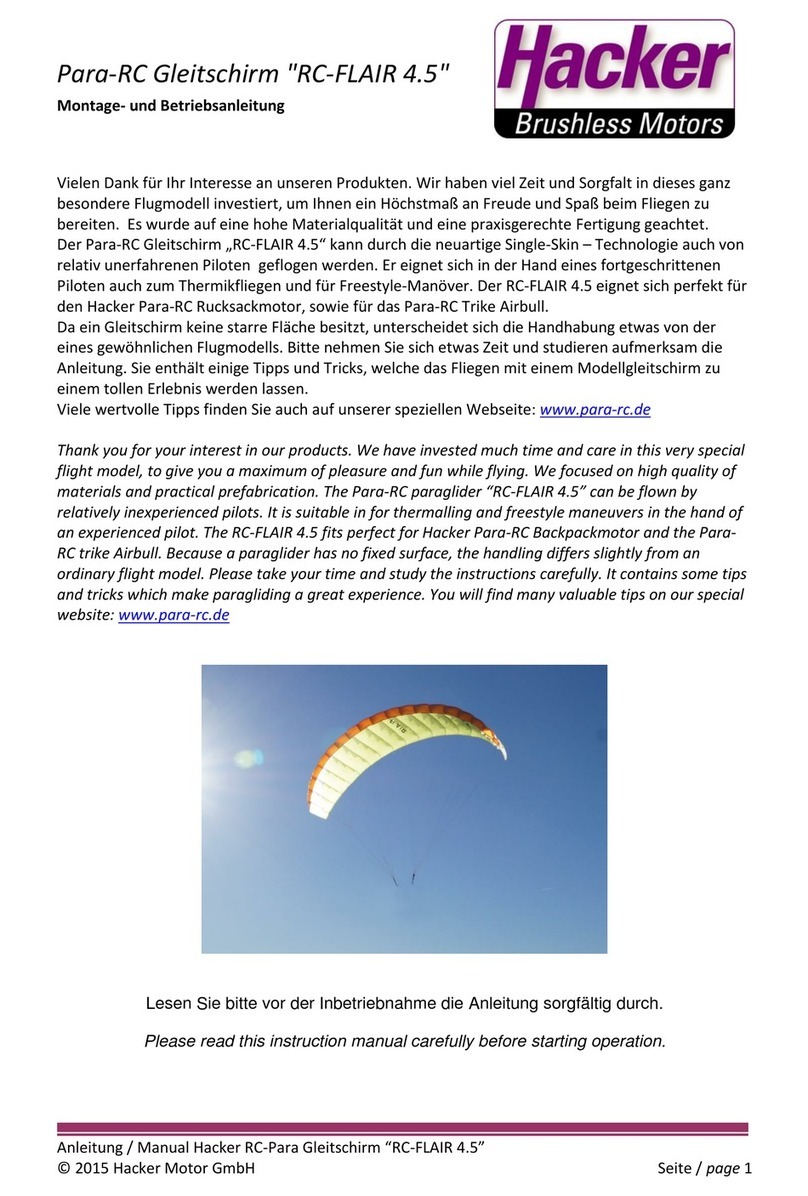
Hacker
Hacker RC-FLAIR 4.5 manual
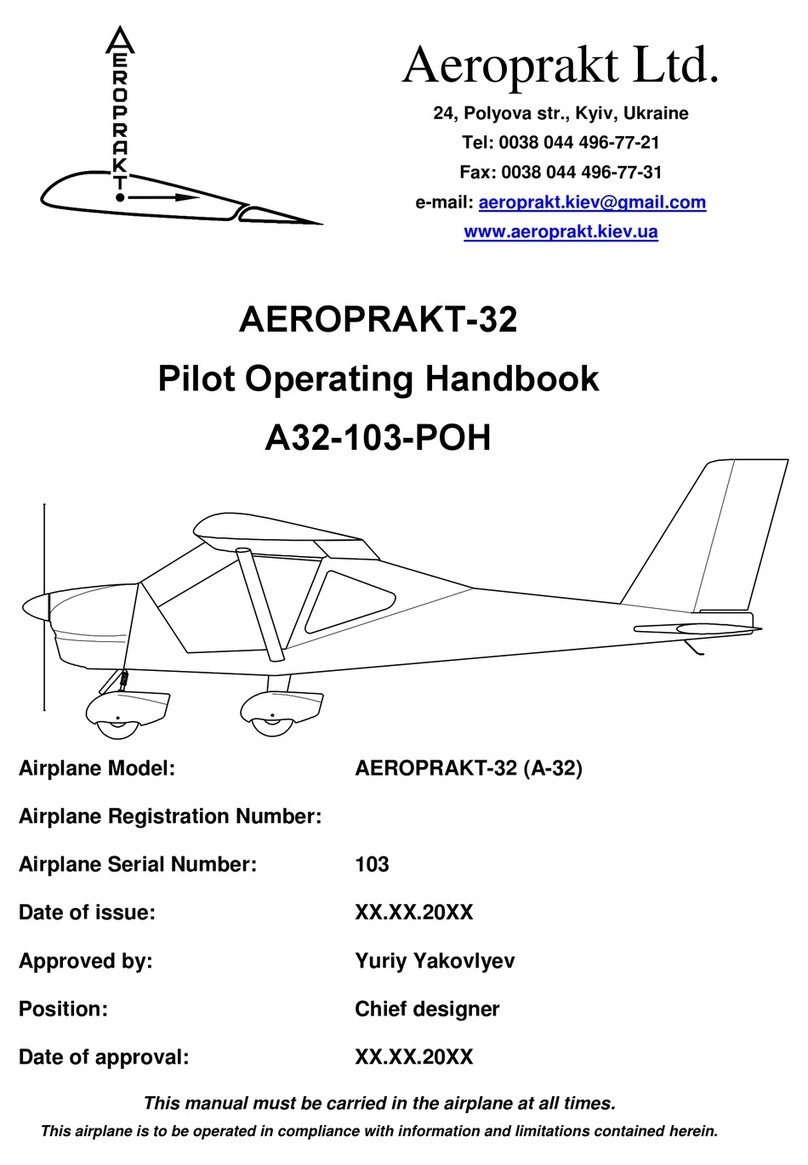
AEROPRAKT
AEROPRAKT A32-103-POH Pilot operating handbook

AirBorne WindSports
AirBorne WindSports XT 582 Maintenance manual
